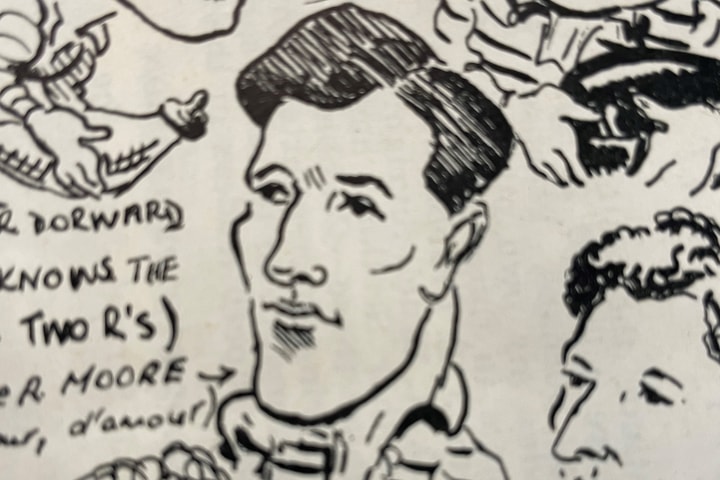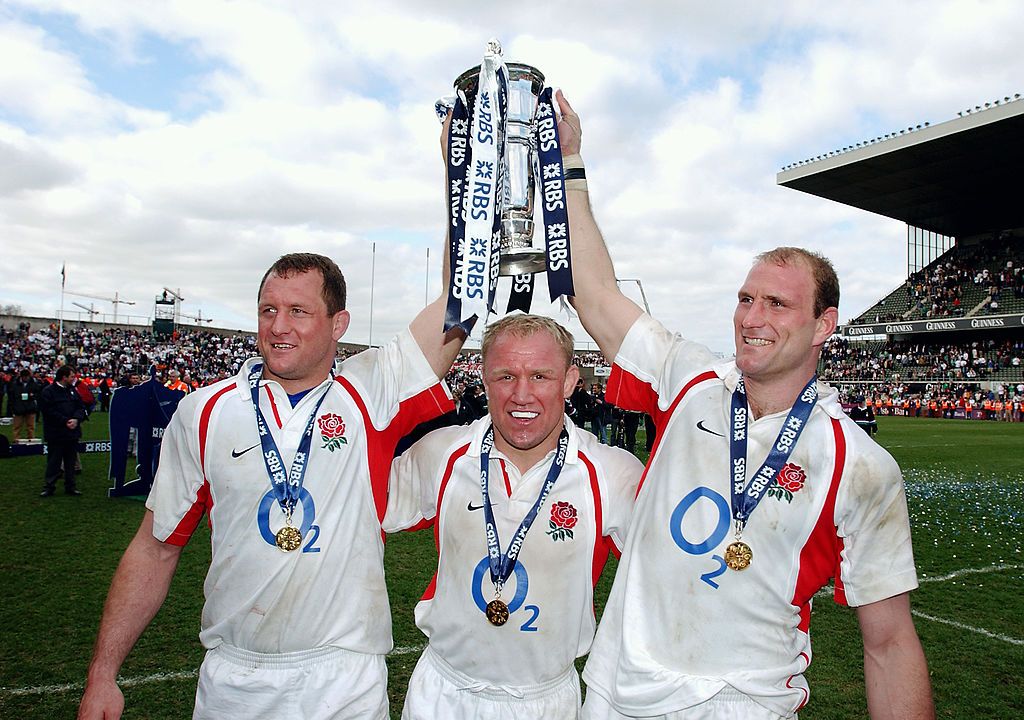
21 November 2025

The major achievements of the England rugby team since 1910 have been invariably linked to the selection of back row combinations of the highest quality.
As rugby evolved in the early years of the 20th century, the necessity to select a wing forward with genuine speed and positional sense became an essential component in any successful team. Dave Gallaher, captain of the 1905-06 All Blacks tour to the UK and France, showed what was possible and the home nations followed suit. Equally clear was the growing need to pick a strong yet mobile back row forward behind the two middle row forwards to anchor the eight-man scrummage.
England were fortunate that CH 'Cherry' Pillman from Blackheath came to prominence in 1910 as the first genuine link player between backs and forwards that England had ever possessed. He won the first of his 18 international caps as a wing forward at Twickenham in 1910 against Wales and played almost without interruption until he broke his leg in the hard-fought victory against Scotland at Inverleith in March 1914.

Cherry Pillman
Pillman scored eight tries, a remarkable record for an England forward that lasted for over 80 years. He was a key member of the first two Grand Slam winning England sides in 1913 and 1914 and his all-round footballing skills were showcased on the 1910 British tour to South Africa where he played an outstanding game out of position at fly half in their second test victory.
One of the major developments in the 1920s was the allocation of defined positions to all the forwards. A young English forward from Cambridge University and Harlequins, Wavell Wakefield, played a significant role in ensuring that England were quick to adopt the new scrum formation. With the back row now an acknowledged component in linking forwards with backs, the English team won three Grand Slams in four years between 1921 and 1924 with great back row forwards such as Gloucester's Tom Voyce, Geoff Conway, Freddie Blakiston and Wakefield himself in the earlier part of his long and distinguished career.
In the 1928 Grand Slam side, the Waterloo wing forward HG 'Joe' Periton played a vital role with two tries in their victory against France in the middle of a 21-cap career in which he scored six tries and captained England four times in 1929-30. His fellow wing forward in four matches in 1928 was Jerry Hanley from Plymouth Albion with Leicester and future British Lions captain, FD 'Doug' Prentice at number 8 for the last three matches.
The seventh English Grand Slam in 1957 contained a balanced back row with marauding wing forwards Peter Robbins and Reg Higgins alongside Waterloo's Alan Ashcroft at number eight. Higgins had been a British Lion in 1955 and Ashcroft was to become one in 1959. Robbins was most unlucky in that he broke his leg after selection for the 1959 Lions tour to New Zealand and Australia and was unable to tour. England went on to win the Championship the next year with Ron Syrett of Wasps replacing Higgins.
Although England won the Championship in 1963 with DP 'Budge' Rogers in fine form at wing forward, the selectors never seemed to find the best back row combination over the next fifteen years. Individual players such as Bob Taylor, Peter Dixon and Andy Ripley gained distinction through their exploits on British Lions tours, but the England side never settled and no trophies or championships came their way.
After years of under-achievement all came good in 1980 when England won their eighth Grand Slam. Convincing victories against Ireland and France were followed by a lucky win against 14-man Wales and a majestic 30-18 victory over Scotland at Murrayfield. The veteran British and Irish Lions flankers Tony Neary and Roger Uttley played alongside John Scott in the back row and, with reserves of the calibre of Bristol's Mike Rafter, gave England an edge unmatched by their opponents that season.
There was mixed success for England in the mid-1980s but the rewards came at the end of the decade. Denied a Grand Slam by Scotland in the 1990 Championship, England reached the World Cup Final in 1991 and won consecutive Grand Slams in 1991 and 1992. Their back row stocks were rich with Peter Winterbottom, Mike Teague, Dean Richards, Micky Skinner and Gary Rees available. Tim Rodber and Ben Clarke carried on the tradition of outstanding back row forwards in the mid-1990s before a great English back row combination emerged at the end of the 1990s.
Successive attempts to win the Grand Slam had been denied until a huge victory over Ireland in Dublin secured the championship with all honours in March 2003. The England side then showed immense strength of character to beat New Zealand and Australia in the summer on their home turf in preparation for the Rugby World Cup. On a memorable night in Sydney in November, England achieved their goal by defeating Australia in extra time.

DUBLIN - MARCH 30: Richard Hill, Neil Back and Lawrence Dallaglio of England celebrate with the Six Nations Trophy after the RBS Six Nations Championship match between Ireland and England held on March 30, 2003 at Lansdowne Road in Dublin, Ireland. England won the match 42 - 6 and the Grand Slam. (Photo By David Rogers/Getty Images)
The 2003 World Cup winning back row combination of Richard Hill of Saracens, Neil Back of Leicester and Lawrence Dallaglio from Wasps, was a perfect blend of power, pace and positional support play. Back row forwards of the quality of future England captains Martin Corry and Lewis Moody and Joe Worsley, all British Lions, were unable to get into the starting team at that point and the potential of the England side for the future seemed limitless.
But England rugby has never developed in a straight line. There were to be years of disappointment before England won the Grand Slam again in 2016 after their unhappy 2015 World Cup campaign. The combination of Chris Robshaw and James Haskell on the flanks with the young busting Billy Vunipola proved the tonic and they went on to defeat Australia in three test matches away from home that summer as part of an undefeated run of 18 matches.
Only Vunipola remained in the back row when England went into the 2019 World Cup in Japan, but the emergence of two young wing forwards, Tom Curry from Sale Sharks and Sam Underhill from Bath Rugby, drove England to their epic wins against Australia and New Zealand before succumbing to the might of South Africa in the Final.
The Evolution of the English Back Row is an unused article that was prepared for the book '150 Years of England Rugby: 1871 - 2021' by Phil McGowan and Richard Steele. Published by VSP and available to buy here.
